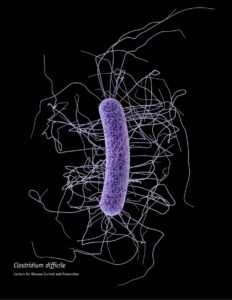 Researchers rely on PacBio long-reads for richness and resolution when probing genomes, and these same attributes are becoming increasingly relevant in clinical settings. One field where the technology shows particular promise is infectious disease control.
Researchers rely on PacBio long-reads for richness and resolution when probing genomes, and these same attributes are becoming increasingly relevant in clinical settings. One field where the technology shows particular promise is infectious disease control.
When a disease outbreak hits a hospital, it is crucial that the pathogen and its transmission path are rapidly and accurately identified.
As PacBio researchers demonstrated in CLP magazine, current microbial detection techniques that rely solely on short-read DNA sequences can misidentify pathogens, resulting in incorrect prognosis and misinformed treatment decisions.
SMRT Sequencing, on the other hand, can paint a complete picture of entire genomes, as well as plasmids and other elements that may contribute to drug resistance. In an era of increasing antibiotic resistance, this is especially important. Methylation data generated during the sequencing process can provide further insights into pathogen virulence, essential information for outbreak response and control efforts.
At Mount Sinai Hospital in New York City, pathologists have successfully integrated SMRT Sequencing into the Mount Sinai Pathogen Surveillance Program. Established in 2014, the program has sequenced more than 1,000 genomes, cataloging around 36,000 isolates from 18,000 patients. While its original role was in reactive outbreak investigation, it is now a tool for proactive, continuous infection surveillance.
Adding SMRT Sequencing to routine surveillance of MRSA and C. difficile throughout the hospital has provided a more comprehensive view of drug resistance and revealed new pathogenic strains and unexpected transmission paths—and it does so rapidly enough to inform treatment, quarantine protocols, and other decisions that are essential for optimal patient care, according to Harm van Bakel, Assistant Professor of Genetics and Genomic Sciences, Icahn School of Medicine at Mount Sinai.
In a recent webinar, van Bakel gave an example where deep dives into genomic data enabled his team to crack a cryptic transmission case within the hospital’s newborn intensive care unit (NICU).
A total of 18 infants were struck with MRSA over the course of four months. Within this time, genetic drift resulted in changes in isolate genomes from patient samples. The depth and resolution of the PacBio whole genome sequencing enabled van Bakel to detect sub clades and sub-transmissions within the outbreak, and to apply this information to an analysis of outbreak progression over time.
“It’s very useful here to have the complete gene so that you can maximize the amount of available variation information,” van Bakel said. “You can get to some of these elements with short-read sequencing, but you can only really understand what’s going on if you reconstruct complete genomes.”
The pathologists married their genetic observations with other information collected around the hospital to fully reconstruct the outbreak — and ultimately track its origin.
An initial outbreak among a few patients quickly spread throughout the NICU. The unit was completely emptied and extensively cleaned as a result. But upon return to the unit, two more patients infected each other, followed by another few. This led to a second cleaning event and additional training, and the outbreak was successfully contained.
The staff were puzzled by the origins of the infection. Thanks to Mt. Sinai’s continuous sample collection as part of the surveillance protocol, van Bakel was able to go back several months into the hospital’s archived data and discover that the original transmission source was an adult ward.
That raised additional questions, however. The units were in different buildings, with no overlap of healthcare providers. How was the infection transmitted between units? Examining environmental samples collected from mobile equipment that might have passed through both wards, van Bakel was able to solve that mystery, too: Ventilators.
“Building these large collections of clinical samples and bacterial/viral isolates, and combining them with whole genome analysis, really allows you to study transmission dynamics and pathogen evolution in a hospital setting,” he said.
“In almost all cases where we investigate outbreaks, the genome tells us a slightly different story than what was suspected based on epidemiology alone,” van Bakel added. “I think it’s really something that needs to be integrated into general infection prevention practices in hospitals.”
April 22, 2019 | Infectious disease research